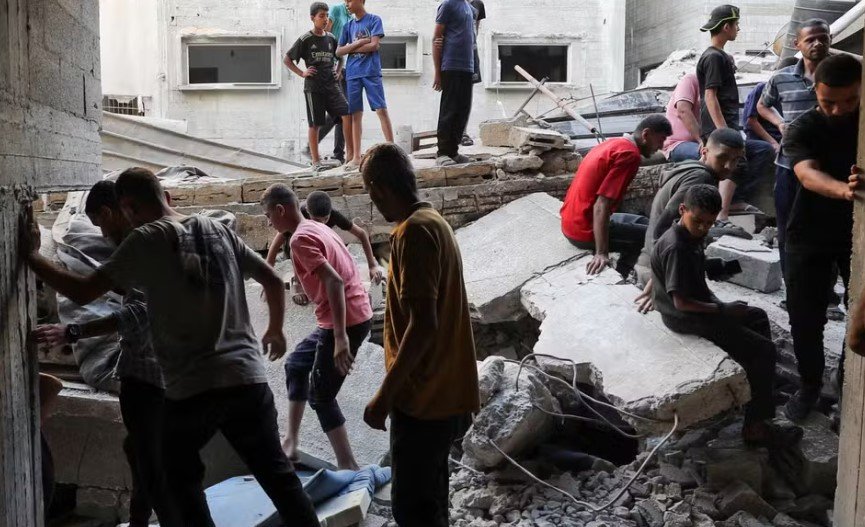Egypt has stepped up its role in the ongoing Gaza conflict by pushing Hamas toward a new truce proposal. In Cairo, mediators are urging the group to accept a 60-day ceasefire that includes hostage releases and aid deliveries, amid warnings that refusal could isolate Hamas from key allies.
This move comes as the war enters its 22nd month, with recent talks highlighting Egypt’s firm stance against any deal that threatens its borders or allows mass displacement. President Abdel Fattah el-Sisi has emphasized the need for urgent humanitarian relief through the Rafah crossing, rejecting ideas of reoccupation or forced transfers of Palestinians.
Background of the Truce Proposal
The proposal, backed by Egypt and Qatar, calls for Hamas to release about half of the remaining Israeli hostages in exchange for Palestinian prisoners. It includes a temporary pullback of Israeli forces and a surge in aid to Gaza.
Talks intensified in mid-August 2025, with Hamas delegations meeting Egyptian officials. Sources indicate that other Palestinian factions have agreed to the draft without major changes, putting pressure on Hamas to follow suit.
This is not the first attempt at a truce. Earlier proposals in 2025, such as those in March and April, saw Hamas accept terms only for Israel to raise concerns or pull back.
Egypt’s involvement stems from its strategic position. Sharing a border with Gaza, Cairo worries about spillover effects like refugee influxes into Sinai.

Key Elements of the Deal
The truce aims to pause fighting for 60 days, allowing time for negotiations on longer-term issues. Here are the main components:
- Hostage and prisoner exchange: Hamas would free around 25 to 30 Israeli captives in phases, while Israel releases hundreds of Palestinian detainees.
- Aid and reconstruction: Increased humanitarian supplies, including food, medicine, and shelter materials, would enter Gaza through Rafah.
- Troop movements: Israeli forces would withdraw from certain areas, but not fully from the strip.
- Governance tests: New administrative setups could be trialed in Gaza to address post-war management.
These elements address immediate needs but stop short of a full end to the war, which Hamas has demanded.
A table below outlines the phased rollout:
| Phase | Duration | Key Actions |
|---|---|---|
| Phase 1 | First 30 days | Initial hostage releases, aid convoys enter, partial troop pullback |
| Phase 2 | Next 30 days | Remaining exchanges, monitoring of ceasefire, talks on governance |
This structure provides a roadmap but leaves room for disputes if either side violates terms.
Pressures Facing Hamas
Hamas faces growing isolation. Washington and Doha have aligned with Cairo’s approach, signaling that a partial deal is the best available option right now.
Rival Palestinian groups, once pushed aside by Hamas, now support the proposal. This unity among factions weakens Hamas’s bargaining power.
Egypt has drawn red lines, refusing any agreement that could lead to Palestinians being displaced into Sinai or elsewhere, like rumored plans for South Sudan.
Hamas worries that without U.S. guarantees, Israel might restart attacks after the pause. Yet, refusing the deal risks losing support from Arab mediators.
Recent events, such as Israeli airstrikes in Khan Younis in August 2025, underscore the urgency. Smoke from those strikes highlighted the ongoing destruction, pushing all sides toward compromise.
Broader Regional Implications
The negotiations reflect wider Middle East dynamics. Egypt’s push ties into its national security, especially protecting Sinai from instability.
Qatar’s prime minister visited Egypt in August 2025 to coordinate efforts, showing joint commitment.
If successful, the truce could open doors for reconstruction. Gaza has suffered massive damage, with estimates from international reports putting rebuilding costs at billions of dollars over five years.
However, failure might escalate tensions. Israel remains committed to defeating Hamas, while the group seeks a complete withdrawal and end to the blockade.
Humanitarian crises continue, with starvation risks in parts of Gaza prompting daily fighting pauses announced by Israel.
Challenges and Potential Outcomes
Skepticism remains high. Past deals, like the one Hamas accepted in May 2025 with amendments for stepping down from governance, fell through due to disagreements.
Hamas has offered long-term truces before, including a five-year plan in April 2025, but Israel rejected them.
The current proposal amends withdrawal lines and limits Israeli presence during the truce, addressing some Hamas concerns.
Yet, without ironclad guarantees, trust is low. Mediators hope the 60-day window allows for building confidence.
Experts note that Egypt’s denial of weapons transfer claims in August 2025 cleared the air, focusing talks on peace rather than accusations.
As negotiations proceed, the world watches. A breakthrough could ease suffering in Gaza and stabilize the region.
What do you think about this development? Share your thoughts in the comments below and spread the word to keep the conversation going.
